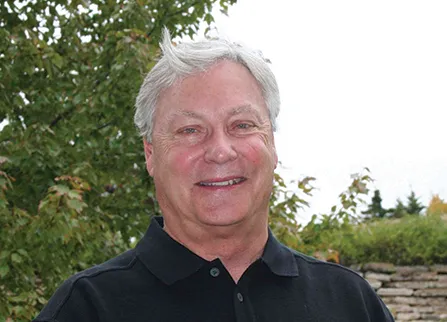Just a few days ago, the smell and sight of spring burning in this region of Kansas evoked this childhood memory….
It started with a spark on a rail that jumped into the dry summer prairie and ignited. Within seconds the southerly wind whipped the fire across the pasture toward our small, rural school.
The culprit was an old black steam engine from the Union Pacific railway that lurched and pulled boxcars filled with wheat across the flat short-grass prairie. It was one of those giant puffing behemoths complete with pistons and huge driving wheels.
The year was 1959. The place – Seguin, Kan., population 47 counting three dogs and two cats.
I attended grade school in that two-room structure and while I enjoyed class as much as any of my schoolmates, these prairie fires were legendary. Such an event provided us the opportunity to miss class, abandon our schoolhouse and watch the approaching fire under God’s grandest cathedral – the big-sky country of northwestern Kansas.
Inside our school, Sister Helena Marie lined us up to march onto the road and away from the fire. Outside, we could hear the crackling fire as it licked up the tinderbox-dry grass. The flames raced along the ground a good foot tall. The smoke trailed into the blue sky and looked like it might block out the sun.
As the hypnotic orange flames raced toward our school, we all wondered about how close the fire might come, would it burn our school down and where would we go then?
For our dads, fighting these fires was something completely different. Such fires threatened to burn a neighbor’s home to the ground, destroy a farmstead or even take a life.
Our small rural community did not have a fire department, fire truck or any other firefighting equipment. When prairie fires occurred, my dad and his farmer neighbors jumped off their tractors and into their pickups and headed for the smoke. One of them always had a water tank in the back; others brought gunny sacks that they soaked with water. Then they ran out onto the prairie to fight the fire.
This wasn’t the first time dad and his farmer neighbors wielded their makeshift fighting tools. When immigrants settled this land, steam engines, dry buffalo grass and strong winds often provided the possibility of such prairie fires. These western Kansas farmers had plenty of experience fighting the flames.
None of my friends or I had a watch at the time, but I figure it took our dads close to an hour to finally beat every last flame into submission.
As they walked back to their pickups, their gait was slow. Soot covered their faces, hands and clothing. They all wore smiles.
They’d stopped the fire. This battle went to the farmers.
We all cheered and like newborn spring calves, threatened to run to our parents. Sister Helena Marie would not hear of it.
“Back into the school house,” she ordered.
As I recall this event occurred during midafternoon, and until the brass school bell rang dismissing us for the day, I spent the rest of that day fighting the fire in my mind. Most of my classmates did the same.
After we bounded down the steps and hit the ground outside the school, Albert Rall, my brother, Steve, and I ran to the edge of the burned prairie southwest of the school building.
Here we surveyed the pasture stretching nearly a half-mile in front of us. As we walked our shoes turned black as burnt grass crunched under our feet. A couple of the posts that supported the barbed wire fence bordering the school property were charred and cracked.
Our nostrils filled with the smoky particles covering the blackened landscape. The three of us walked back toward the schoolhouse. Once we came to the edge of the fire burn, we all three stepped off the distance from there to school.
The distance was approximately 40 yards or about 55 steps for a10-year-old. The fire had come so close this time. If our dads had arrived a few minutes later, our school might have burnt to the ground.
We all breathed a sigh of relief. We were thankful, but no one said a word.
Laughing, we raced around the school and bolted back up the stairs to our desks. Once seated, each of us took out our books and started writing inside the front covers, “In case of fire, throw this in.”
No doubt, these words remain today, directly under the already penned musing, “In God we trust. In school we rust.”
John Schlageck is a leading commentator on agriculture and rural Kansas. Born and raised on a diversified farm in northwestern Kansas, his writing reflects a lifetime of experience, knowledge and passion.



